
NOW Articles Written By Members
An Argument for Collecting Half Dollars
Late Night and a Russian Type Set
Old Country Coins: Newfoundland’s Rarest 5-Cent
Milwaukee Medals: Fifth Ward Constable
A look back at a common, but classic commemorative – Wisconsin’s Territorial Centennial
A side-tracked story: Mardi Gras Doubloons
A look back at a collecting specialty – the O.P.A. ration tokens of WWII
Bullion And Coin Tax Exemption – Act Now!
Is There A Twenty Cent Piece We Can Add To A Collection
Capped Bust Half Dollars: A Numismatic Legacy
U.S. Innovation Dollars: Our Most Under-Collected Coin?
My 2023 ANA Summer Seminar Adventure
>> More articles in the Archive
For more NOW Articles Written By Members,
Microbial Jubilee Medal
by Justin J. Perrault #2104
Given the heightened awareness surrounding the Coronavirus (COVID-19), this is an opportune time to study a “novel” medal that recently entered my collection celebrating the American Society for Microbiology’s 1974 diamond anniversary. Produced by The Medallic Art Company when they were located in Danbury, Connecticut, this bronze medal measures 76.2 millimeters in diameter, is 6.35 millimeters thick, and weighs approximately 175 grams. The Medallic Art Company catalogs this piece as MAco 1973-162.
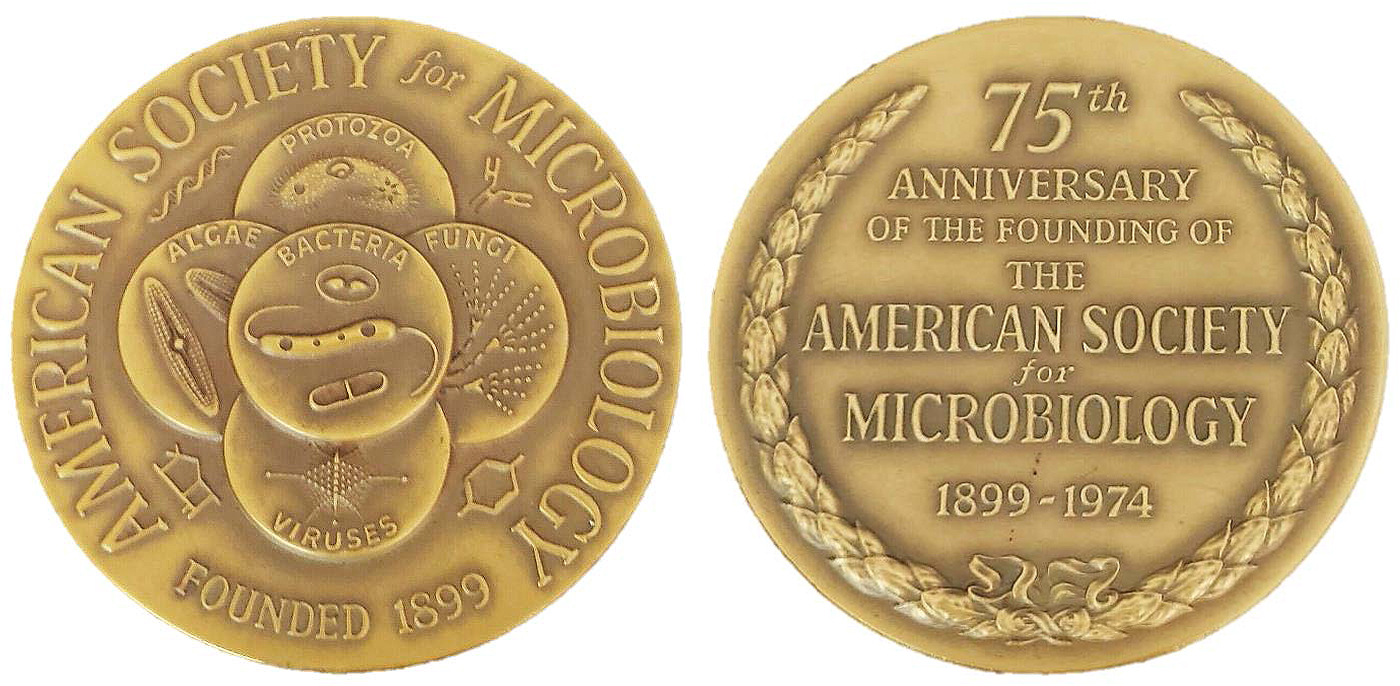
The American Society for Microbiology is a medical organization with a long and storied history. Originally founded as the Society of American Bacteriologists in 1899, it is a professional organization comprised of scientists that study all aspects of microbiology including viruses, bacteria, fungi, algae, and protozoa. The organization took on its current name in December 1960. They regularly publish scholarly articles in a variety of scientific journals, conduct annual meetings, and disseminate their knowledge by holding workshops and seminars for the benefit of their membership. Currently headquartered in Washington D.C. and with over 30,000 members enrolled, the ASM is one of the largest life science societies in the world.
In preparation for the ASM’s 1974 celebration a Diamond Jubilee Committee was formed by six ranking members. They felt that a fitting way to commemorate this milestone would be to issue a medallion featuring an emblem of the Society. The committee engaged in extensive correspondence and discussion among various artists and commercial firms that regularly produce and design such medals. In the end, with approval from the Council Policy Committee, a design submitted by the Medallic Art Company was chosen as the finalist. The committee however still felt this initial design to be somewhat lacking in terms of imagination, so they brought in Doris Murray to refine the design to be more meaningful and artistic.
Ms. Murray happened to be the wife of the AMS’s president at that time, Dr. Robert G. Murray of London, Ontario, and he served as ASM president from 1972-73 and became an honorary member in 1988. Artwork of hers and a collection of her husband’s medals can be found on display in the Dr. Robert G. E. Murray Lounge on the Western University Campus in London, ON where Dr. Murray was a professor. Dr. Murray played a seminal role in the genesis of the Canadian Society for Microbiologists and had a storied career in the field of microbiology. He became interested in and involved with the ASM during his tenure as a member of the editorial board to the Journal of Bacteriology. As an interesting side note, he was appointed to the distinguished Officer of the Order of Canada, which is the second highest honor for merit in the system of orders, decorations, and medals of Canada. Noted Medallic Art sculptor and pulp fiction cover artist Clarence Doore was subsequently commissioned to further refine the design, ultimately bringing the emblem as depicted on the ASM anniversary medal to reality.
The final design on the front of the medal is very detailed and highly symbolic. The five overlapping circular panels display the characteristic microbial types that are studied by microbiologists and are labeled accordingly: algae, protozoa, fungi, bacteria, and viruses. The first four of these are representations of the typical forms as may be seen under the light microscope. The representation in the field devoted to viruses is that of an adenovirus as it might be visualized under the electron microscope.

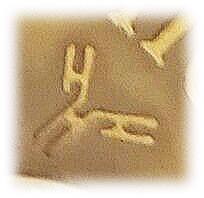 Further outside around the five circular panels appear four symbols which represent important applications to the science of microbiology. The symbol to the upper right above the fungi represents the molecular structure of an immunoglobulin, a characteristic of the specialty of immunology. Immunology is the study and application of the immune system, the means by which an animal organism develops immunity against an invading infectious organism or other biological foreign substances introduced to the animal host. Immunology is an important element in the control of infectious disease because it can lead to the development of vaccines, the diagnosis of disease, and determining blood type.
Further outside around the five circular panels appear four symbols which represent important applications to the science of microbiology. The symbol to the upper right above the fungi represents the molecular structure of an immunoglobulin, a characteristic of the specialty of immunology. Immunology is the study and application of the immune system, the means by which an animal organism develops immunity against an invading infectious organism or other biological foreign substances introduced to the animal host. Immunology is an important element in the control of infectious disease because it can lead to the development of vaccines, the diagnosis of disease, and determining blood type.
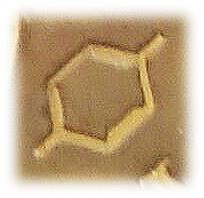 The symbol at the lower right below the fungi represents the chemical structure of para-aminobenzoic acid (PABA), which is an essential nutrient for many bacteria. This all gets very complex, but the antibacterial effect of sulfanilamide and its derivatives depends upon the close chemical and physical similarity to PABA. Therefore, this symbol represents the chemotherapy of infectious disease through the antimetabolite effect.
The symbol at the lower right below the fungi represents the chemical structure of para-aminobenzoic acid (PABA), which is an essential nutrient for many bacteria. This all gets very complex, but the antibacterial effect of sulfanilamide and its derivatives depends upon the close chemical and physical similarity to PABA. Therefore, this symbol represents the chemotherapy of infectious disease through the antimetabolite effect.
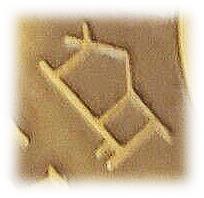 At the lower left below the algae is a symbol that represents the idealized chemical structure of 6-aminopenicillanic acid, in other words the basic structure that comprises penicillin. This depiction of penicillin is symbolic for the contributions of the microbiology community to the cure and control of infectious disease through the discovery and application of antibiotics.
At the lower left below the algae is a symbol that represents the idealized chemical structure of 6-aminopenicillanic acid, in other words the basic structure that comprises penicillin. This depiction of penicillin is symbolic for the contributions of the microbiology community to the cure and control of infectious disease through the discovery and application of antibiotics.
 The symbol at the lower right below the fungi represents the chemical structure of para-aminobenzoic acid (PABA), which is an essential nutrient for many bacteria. This all gets very complex, but the antibacterial effect of sulfanilamide and its derivatives depends upon the close chemical and physical similarity to PABA. Therefore, this symbol represents the chemotherapy of infectious disease through the antimetabolite effect.
The symbol at the lower right below the fungi represents the chemical structure of para-aminobenzoic acid (PABA), which is an essential nutrient for many bacteria. This all gets very complex, but the antibacterial effect of sulfanilamide and its derivatives depends upon the close chemical and physical similarity to PABA. Therefore, this symbol represents the chemotherapy of infectious disease through the antimetabolite effect.
According to my research from a contact at the ASM archives these medals were first made available at the May 1974 ASM Meeting in Chicago. They were produced and sold both in bronze for an initial price of $6 ($12 thereafter) and .999 fine silver for $65. Following the meeting additional medals could be purchased directly from the ASM headquarters office. The silver medals were touted as being produced in a limited numbered series, available only as supplies lasted.
The original order was apparently set at 1,500 pieces for the bronze medals and 25 pieces for the silver medals. However, a note in the minutes of the Council Policy Committee meeting of November 1974 indicates there were 997 bronze and 109 silver medals on hand, so unless this was a typographical error, at some point the ASM must have seen fit to substantially increase their order of silver medals. Also, as an interesting side note, the ASM attempted to work with the USPS office of philatelic affairs in order to have a stamp issued that would use a design similar to that of the medal, but nothing ever became of this concept.
In summary, this medal is a very unique depiction of symbolic essences that are essential to the field of microbiology and life in general. There are not many medals out there that depict such a unique array of microscopic life, making this a very interesting and artistically pleasing piece.
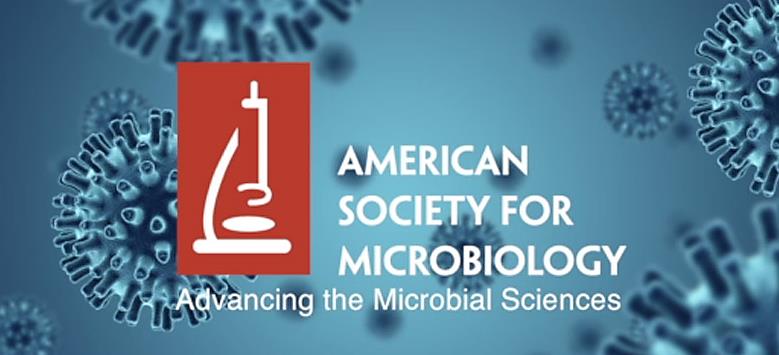
Sources:
https://www.asm.org/ (last visited 1/31/2020)
http://www.medalartists.com/doore-clarence.html (last visited 2/4/2020)
https://news.westernu.ca/2014/05/lasting-legacies-murrays-1-6-million-gift-to-benefit-graduate-students/ (last visited 3/17/2020)
https://www.csm-scm.org/cms/ckfinder/userfiles/files/R_G_E_%20Murray.pdf (last visited 3/17/2020)
https://www.canada.ca/en/department-national-defence/services/medals/medals-chart-index/officer-order-canada-oc.html (last visited 3/17/2020)
ASM News, May 1974
Have an interesting numismatic topic you’d like to share with your fellow NOW members?
Send your article to evan.pretzer@protonmail.com today!!!